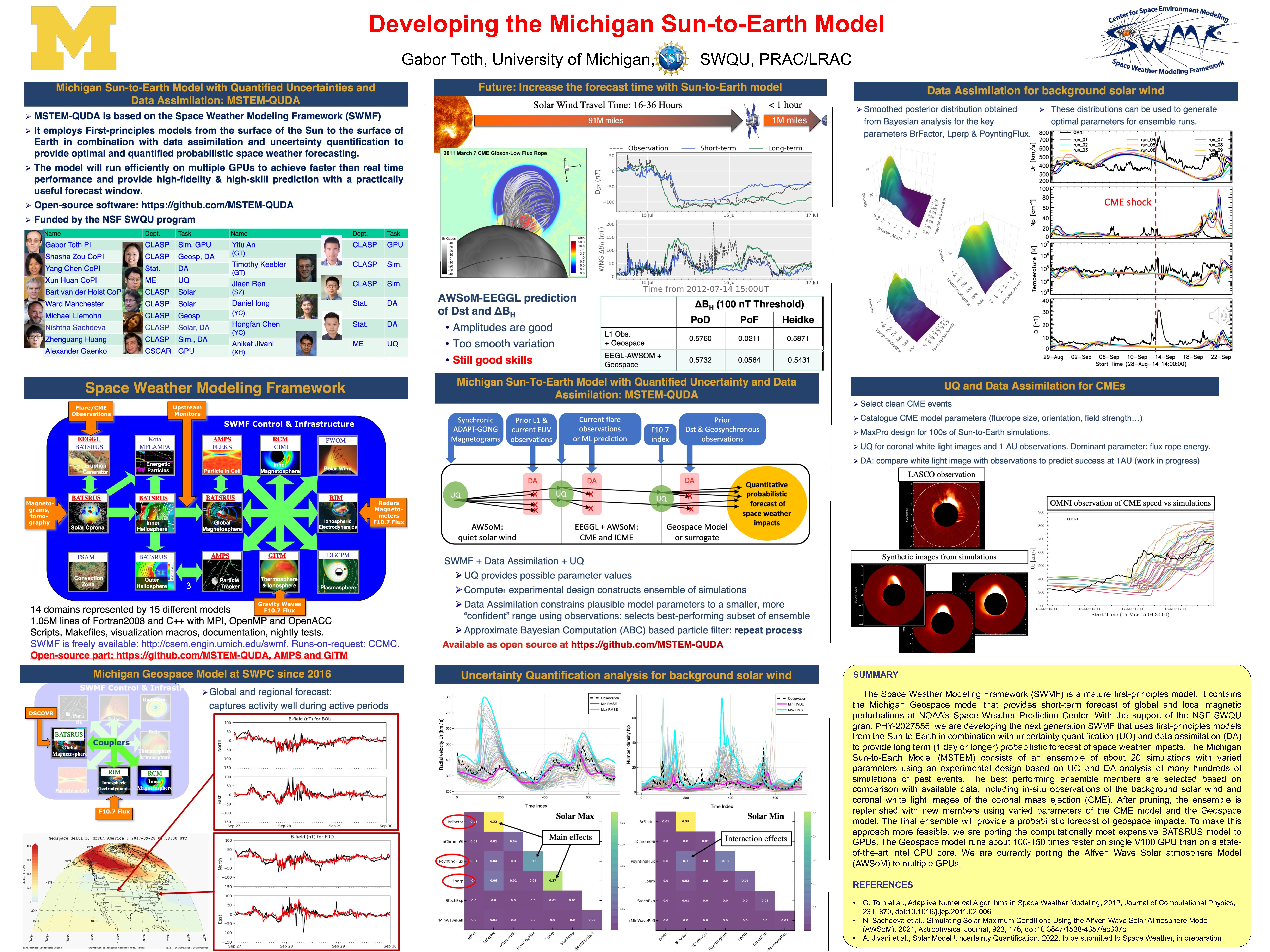Authors: Gabor Toth (University of Michigan)
As part of the Space Weather with Quantified Uncertainty program, our project, funded by NSF, has been working on developing the Michigan Sun-to-Earth Model with Data Assimilation and Quantified Uncertainty (MSTEM-QUDA). In this talk we will summarize the main goals of the project and report our progress. Using sophisticated experimental design and fully automated scripts, we have performed many hundreds of simulations with our solar corona and heliosphere model generating steady state solar wind solutions. Based on these simulations, we have completed the uncertainty quantification analysis. One important finding is that the physically meaningful range of certain model parameters depends on the solar cycle. We will use an ensemble of background solar wind model solutions as a starting point for simulating coronal mass ejections. Our preliminary model runs show promising accuracy for the CME arrival time. We have also ported the Geospace model, a large part of MSTEM-QUDA, to run efficiently on a GPU. In fact, we can run the operational Geospace model on a single GPU significantly faster than real time at the same speed as using about 100 CPU cores. The Michigan Sun-to-Earth Model is available as an open-source distribution at https://github.com/MSTEM-QUDA to the entire community.


